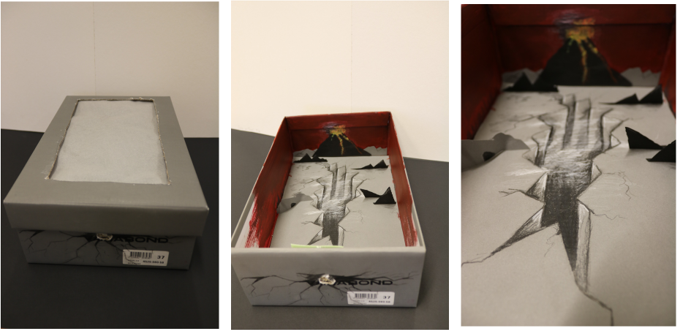Jyväskylä Christian School, Jyväskylä
Teacher: Jukka Sinnemäki
3D Printing for Enhancing Collective Creativities and Key Competence Development
3D printing STEAM projects provide a transformative approach to education. The integration of digital fabrication and modelling, particularly through 3D printing, into STEAM education fosters active and experiential learning. It encourages a cyclical process of design, creation, reflection, and adaptation, promoting both individual and collaborative problem-solving. This hands-on, inquiry-based learning approach allows students to create their own learning journey, enhancing their autonomy and engagement.
Furthermore, it supports understanding different ideas and perspectives, fostering an inclusive and diverse learning environment. Thus, 3D printing serves as a powerful tool in STEAM education, enhancing key competencies and transforming the learning experience. The students were using CraftBot 3D printers to realize the projects. The projects included printing a board game, sculptures of STEAM celebrities, simple mechanical instruments, and action figures and logos based on the student’s wishes.
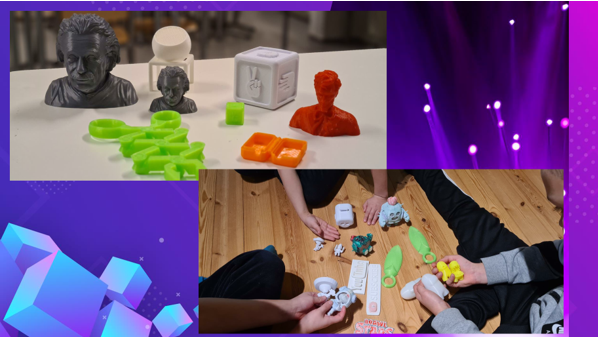
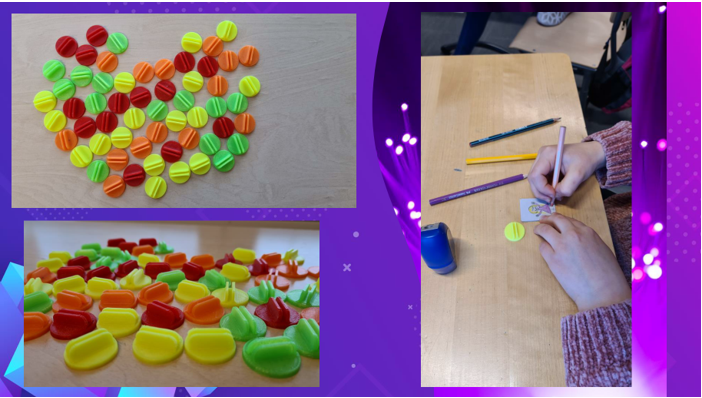
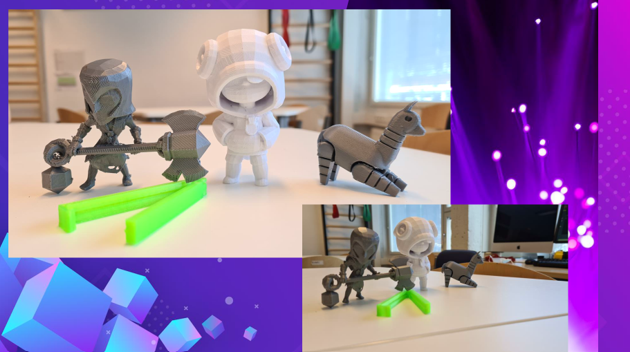
Cognitive Games to Develop Problem-solving
The use of cognitive games like the Mondrian Blocks puzzle in STEAM education offers multifaceted benefits. These games stimulate cognitive development by challenging students to apply logical reasoning, spatial awareness, and problem-solving skills, key components of the STEAM fields. They foster creativity and innovation, as students must think outside the box to solve complex puzzles. Additionally, these games provide an engaging, hands-on learning experience that can enhance understanding of abstract concepts, promote perseverance, and develop resilience facing challenges. The iterative nature of puzzle-solving also mirrors the scientific process, teaching students the value of trial and error, hypothesis testing, and revision. Thus, cognitive games are an effective tool for holistic STEAM education, nurturing both hard and soft skills essential for future success.
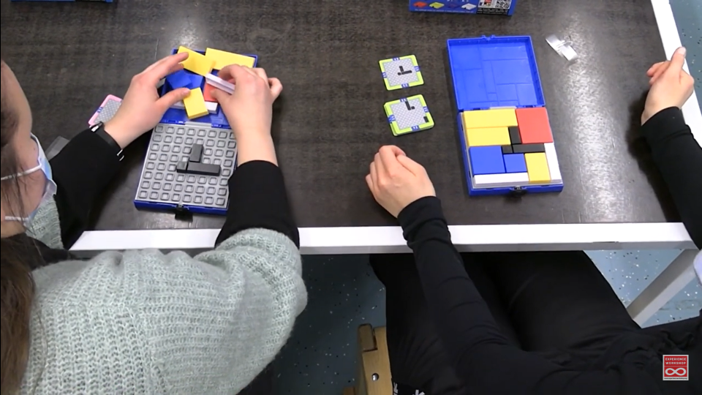
4Dframe hands-on robotics
4Dframe hands-on robotics activities serve as a powerful approach in STEAM education, providing students with a tangible, interactive way to explore complex concepts in mechatronics and beyond. These kits allow students to design, build, and program their own robots, fostering creativity, innovation, and critical thinking. Through this process, students gain a deep understanding of mechanical and electronic principles as well as programming logic. The hands-on nature of these kits enhances spatial awareness and fine motor skills, while the iterative process of design, testing, and refinement mirrors the scientific method, teaching students the value of persistence and problem-solving. Furthermore, the collaborative aspect of these projects encourages communication and teamwork, which are essential soft skills in any STEAM field.
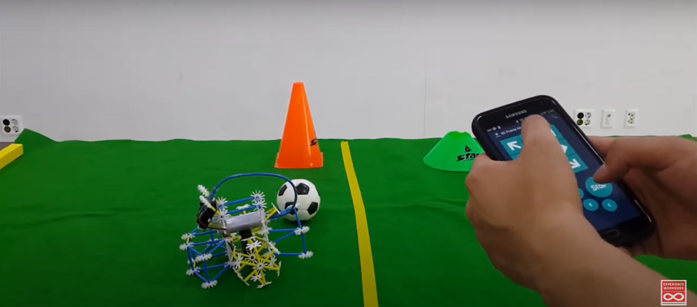
Activating learning through embodied methods in the STEAM classroom
Implementing embodied learning methods in the STEAM classroom, which involve free body movement and physical activities, can significantly enhance the learning experience. Embodied learning encourages active participation and engagement, which can lead to improved memory retention and understanding of complex concepts. This approach also fosters kinesthetics intelligence, enhancing spatial awareness and coordination. Moreover, embodied learning can stimulate creativity and innovation, as students are encouraged to think outside traditional learning paradigms. It also promotes physical health and well-being, which are linked to improved cognitive function (Fenyvesi et al., 2022). Furthermore, these activities often involve collaboration, fostering communication and teamwork skills. Therefore, embodied learning offers a holistic, multi-sensory approach to STEAM education, making learning more interactive, enjoyable, and effective.
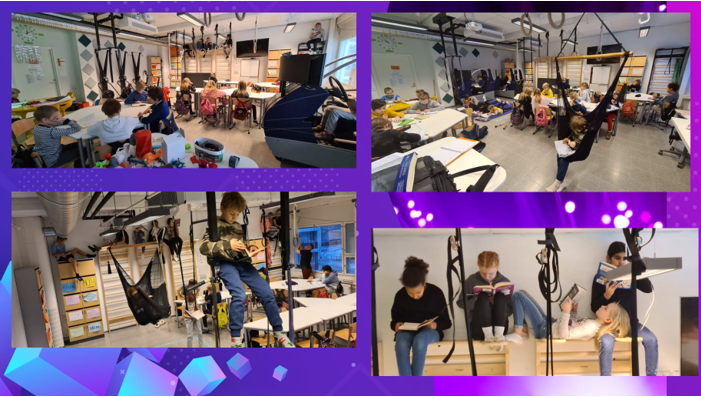
Norssi, University of Jyväskylä’s Teacher Training School, Jyväskylä
Teacher: Minna Suikkari
Water wonders
A comprehensive, interdisciplinary STEAM activity that immerses students in the exploration of water through various lenses. Utilizing mathematics, students engage in activities such as measuring water quantities, analysing water usage data, and understanding the geometry of water flow. Literary skills are honed through reading and discussing a diverse range of texts, from scientific articles about the water cycle to cultural stories centred around water. Students also investigate the physical properties and sensory aspects of water, conducting experiments to understand its states, temperature changes, and unique characteristics. The project incorporates the arts by creating water-themed artwork and performing water-related songs, fostering creativity and emotional connection to the topic. Additionally, students are encouraged to reflect on the importance of water in our daily lives and its environmental implications, promoting critical thinking and environmental stewardship.
Robomakers
An innovative STEAM initiative to introduce students to the world of programming and robotics, leveraging the engaging and accessible approach of Linda Liukas’ book. The teacher, with activities based on computational thinking, guide students through the process of building and programming their own robots, fostering hands-on learning and problem-solving skills. Liukas’ storytelling method, which humanizes technology and makes complex concepts relatable for young learners, serves as inspiration for the curriculum. Students engage with the narrative while simultaneously learning key programming concepts such as sequences, loops, and conditionals. The project also encourages creativity and critical thinking, as students are challenged to design their robots to perform specific tasks or solve problems. By integrating literature, technology, and hands-on learning, the “RoboMakers” project provides a comprehensive, engaging introduction to programming and robotics, fostering the next generation of tech innovators.
Micro:bit mastery
This project integrates the use of micro:bit technology into the curriculum, providing each student with their own device to explore and learn from. This project is designed to grow with the students, introducing them to progressively more complex applications of the micro:bit as they advance through their education. Initially, students learn the basics of coding and hardware manipulation, discovering the myriad of possibilities that the micro:bit offers, from simple LED displays to interactive games. As their skills develop, they delve into more advanced projects, such as creating sensor-based systems or initiating dialogues between robots. This hands-on approach not only enhances their understanding of programming and electronics but also fosters creativity, problem-solving, and critical thinking skills. By enabling students to learn at their own pace and encouraging them to experiment and innovate, the «Micro:Bit Mastery» project cultivates a deep, enduring understanding of technology and its potential applications.
Sydän Laukka School, Laukka
Teacher: Mirka Havinga and colleagues
Sustainability STEAM Day with the participation of the whole school
It was a thematic project day, based on a dynamic, school-wide STEAM initiative that engaged over 300 students and more than 10 teachers in a day dedicated to exploring and promoting sustainability. The event was structured around an outdoor treasure hunt, where students embarked on an interactive journey to discover clues and solve challenges related to environmental conservation, renewable energy, and sustainable practices. Simultaneously, a series of indoor workshops offered a range of fun, educational experiences. These workshops covered various STEAM activities connected, e.g., to renewable energies, providing students with fun experiences and practical skills and knowledge they could apply in their daily lives. By immersing the entire school community in these engaging activities, the project cultivated a culture of environmental stewardship, fostering a generation of conscious, informed citizens.
Castle of Five Liters
An engaging STEAM activity that combines mathematics and engineering principles to challenge students to construct a castle of exactly 5 liters of volume. Whether they choose a sphere or pyramid shape for their castle, students must apply the mathematical concepts they have learned, such as volume calculation and geometric properties, to ensure their design meets the specified volume requirement. This hands-on project not only reinforces mathematical understanding but also fosters creativity, problem-solving, and spatial reasoning skills. Students are encouraged to experiment with different designs and materials, learning through trial and error. The «Castle of 5-Liters» project thus offers a practical, fun way to apply mathematical knowledge, fostering a deeper understanding and appreciation of the subject.
Microworld in a Shoebox
A comprehensive, hands-on STEAM initiative designed for lower secondary school students. The project aims to provide a practical understanding of STEAM concepts by allowing students to create their own microworld inside a shoebox.
The project also incorporates elements of drama, allowing students to express their creativity and storytelling skills. The students then work on integrating all the project elements, ensuring that the science, technology, engineering, art, and mathematics components all work together seamlessly. The project culminates in a final presentation where students showcase their microworlds, reflecting on their learning journey and the skills they have acquired throughout the project.
Japan Meets Design
A dynamic STEAM initiative that combines design-based learning with an exploration of cultural influences. Students embark on a journey to understand the rich aesthetics of Japanese art, studying its ancient styles and distinctive techniques.
This cultural exploration then serves as the foundation for a practical design task: projecting these artistic influences onto a mug. This hands-on project not only fosters creativity and design skills but also cultivates an appreciation for cultural diversity and historical art forms. The process encourages students to take initiative, promoting problem-solving, craftsmanship, and attention to detail. This shared experience enhances the learning environment, demonstrating the power of design to both educate and inspire. The project thus offers a comprehensive, engaging approach to STEAM education, fostering a deep understanding of design and its cultural contexts.

Pentomino Puzzles
A multifaceted STEAM initiative that invites students to delve into the world of pentominoes, geometric shapes composed of five equal-size squares joined edge-to-edge.
The project begins with a mathematical exploration, where students investigate the different configurations of pentominoes and their properties. This mathematical inquiry then transitions into an artistic challenge, as students use their understanding of pentominoes to create intricate tessellations, patterns that fill a plane with no gaps or overlaps.
To bring their designs to life, students make stamps based on their pentomino tessellations, considering technical aspects such as material selection, stamp making, and ink application. This project not only reinforces mathematical concepts but also fosters creativity, problem-solving, and fine motor skills.
The «Pentomino Puzzles» project thus offers a unique blend of mathematics and art, demonstrating the interconnectedness of the STEAM disciplines.
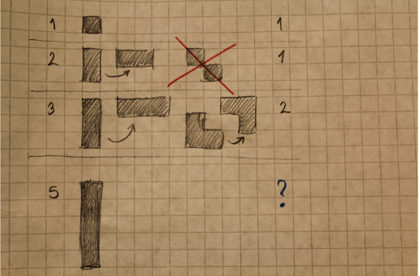
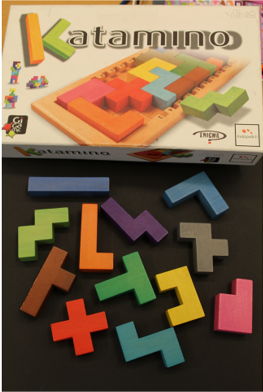
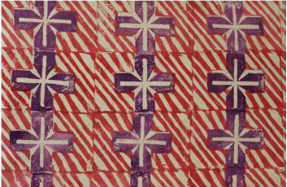
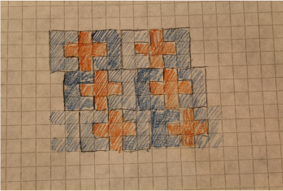
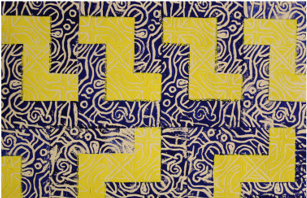
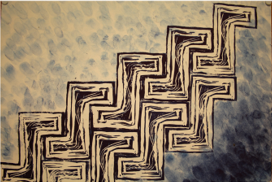
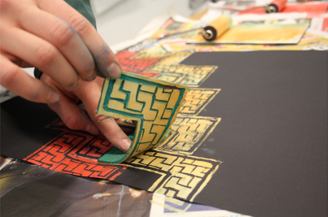

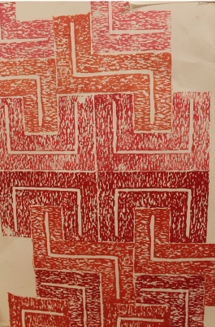
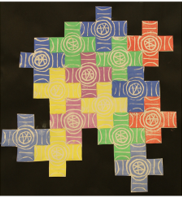
Kortepohja School, Jyväskylä
Teacher: Gwyneth Koljonen
The Northern Lights: Art Meets Science project
It is an interdisciplinary STEAM initiative explorinh the captivating phenomenon of the Northern Lights, or Aurora Borealis, through both scientific and artistic lenses.
Students delve into the science behind these celestial displays, studying the interactions between solar particles and Earth’s magnetic field that result in these stunning light shows. This scientific understanding then serves as the foundation for an artistic exploration, where students recreate the ethereal beauty of the Northern Lights using various art mediums. This project not only fosters a deep understanding of atmospheric science but also encourages creativity and artistic expression. The fusion of art and science in the «Nordic Lights: Art Meets Science» project provides a holistic, engaging learning experience, demonstrating the interconnectedness of the STEAM disciplines and fostering a deep appreciation for natural phenomena.
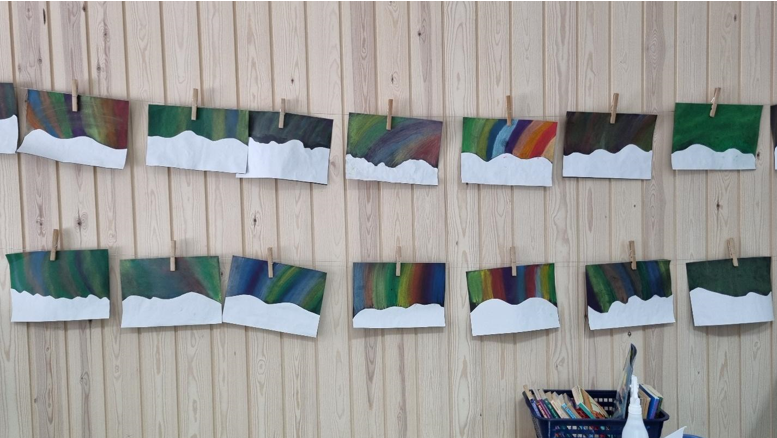
Finland in Focus
The Finland in Focus project is an engaging STEAM initiative that invites students to create a comprehensive poster showcasing the multifaceted aspects of Finland. Students embark on a research journey, exploring Finland’s unique geography, rich history, vibrant culture, significant scientific contributions, and renowned educational system. They then synthesize this information into a visually compelling poster, using design principles to communicate their findings effectively. This project not only enhances research and design skills but also fosters an appreciation for cultural diversity and global awareness. The hands-on nature of the task encourages creativity, critical thinking, and attention to detail. Through the «Finland in Focus» project, students gain a holistic understanding of Finland, fostering global citizenship and intercultural understanding within the STEAM education framework.
Grow Your Own: Green Box
The «Grow Your Own: Green Box» project is a hands-on STEAM initiative combining biology, art, and environmental stewardship elements.
Students are tasked with growing their own plants from seeds, observing and documenting the growth process over time. Concurrently, they design and decorate a box that serves as both a planter and a visual representation of the plant’s lifecycle and characteristics. This project not only fosters an understanding of plant biology and ecology but also encourages creativity and artistic expression. The hands-on nature of the task promotes responsibility, patience, and observational skills. Furthermore, it instils a sense of environmental consciousness and appreciation for nature. The «Grow Your Own: Green Box» project thus offers a comprehensive, engaging approach to STEAM education, fostering a deep understanding of the natural world and our role within it.

LEGO Spike Challenge
An immersive STEAM initiative that provides students with a hands-on, interactive learning experience.
It combines LEGO bricks, programmable hub, motors, and sensors, enabling students to build and program their own creations. The project is designed to grow with the students, introducing them to progressively more complex applications of the set as they advance through their education. The project includes several hours of learning, with standards-aligned lessons and activities spanning various disciplines, from constructing and analysing graphical displays of data to applying engineering design skills. The project offered a comprehensive, engaging approach to STEAM education, fostering creativity, problem-solving, and critical thinking skills.

4DFrame Soccer Bots
An engaging STEAM initiative that combines the principles of robotics and sports through the creation of soccer player robots using 4DFrame Mechatronics toolkits.
Students are tasked with designing and building their own soccer-playing robots, applying concepts of mechanical engineering, programming, and problem-solving. This hands-on project not only reinforces the understanding of robotics and mechatronics but also fosters creativity, teamwork, and strategic thinking as students design their robots to perform specific tasks, such as dribbling, passing, and shooting a soccer ball.
The «4DFrame Soccer Bots» project thus offers a comprehensive, engaging approach to STEAM education, fostering a deep understanding of mechatronics and its potential applications in real-world scenarios.
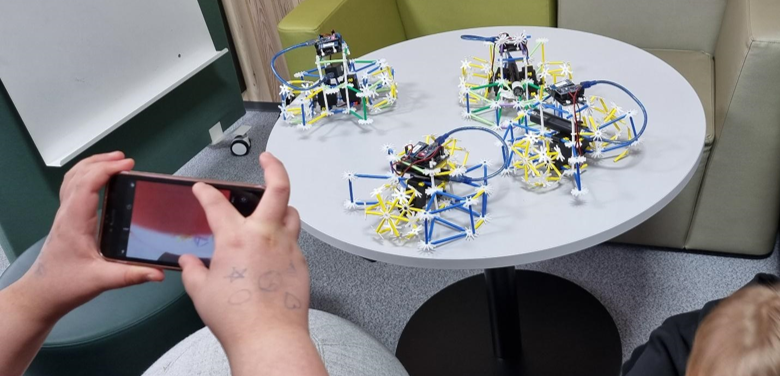

Viitaniemi School, Jyväskylä
Teachers: Leena Kuorikoski and colleagues
Warka Water Wonders
A comprehensive STEAM initiative that blends hands-on and digital modelling to delve into the interconnected themes of the water cycle, water preservation, renewable energy, sustainability, and social design. Students explore these concepts through the lens of Warka Water towers, innovative structures designed to harvest atmospheric water vapour.
By constructing physical models of these towers, students gain a tangible understanding of their function and the principles of the water cycle. Concurrently, they use digital tools to create virtual models, honing their digital literacy and spatial reasoning skills. The project also encourages students to consider broader themes of sustainability and social design, reflecting on how innovations like the Warka Water towers can address global water scarcity and promote renewable energy use. The «Warka Water Wonders» project thus offers a holistic, engaging approach to STEAM education, fostering scientific understanding, problem-solving skills, and global awareness.

